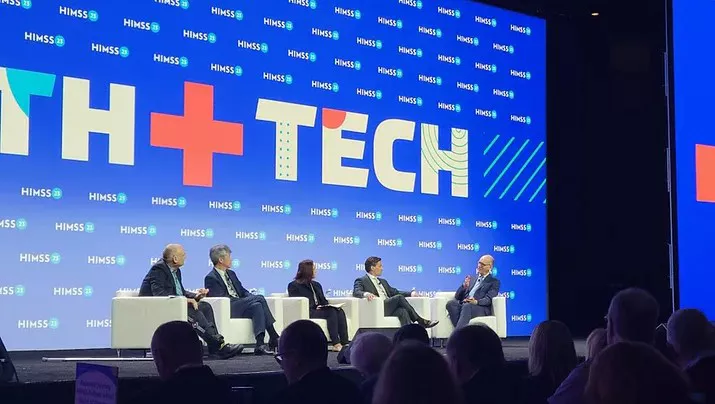ChatGPT-4: How product leaders avoid panic and pitfalls

One million.
That’s the number of users ChatGPT acquired in just five days of its release—a feat that took Netflix 3.5 years to achieve.
The accelerated advancement of digital platforms and the global pandemic catalyzed the development and adoption of generative artificial intelligence (AI), such as ChatGPT. The platform signals the ability to help product leaders do more with less in product design, development, and sales. Here’s how to act on the potential of ChatGPT while sidestepping the pitfalls.
What is ChatGPT?
ChatGPT—or generative pre-trained transformer—is an extensive language model developed by OpenAI. The platform trains on massive amounts of text data and generates humanlike text in various formats, including natural language and code. Deep learning algorithms create new content based on prompted inputs.
As a Microsoft-backed tool, ChatGPT forecasts $1 billion in revenue by the end of 2024.
Efficiency gains with ChatGPT
ChatGPT brings the potential for product leaders to achieve actionable product improvements while expediting manual processes. By automating time-consuming tasks, product leaders pivot to focus on complex jobs requiring human expertise.
Value proposition statements
Writing product value statements is resource intensive. When paired with WriteMyPRD.com, ChatGPT cuts down on time spent staring at a blinking cursor on a blank page.
Here’s an example of how to create a value proposition statement using WriteMyPRD:
- Input your prompt to inform the generative tool
- Identify the intended audience
- Insert technological dependencies
- Experiment with various prompt formats to yield multiple
- Review a variety to get a running start
Low-fidelity wireframe generation
Smart product teams leverage low-fidelity wireframes to explore product concepts, and gain stakeholder buy-in, before risky capital investment.
OpenAI’s DALL·E 2, a new AI system creating realistic images based on a natural language description, assists in product ideation.
The platform generates a design approach based on brief and vague prompts. Of course, a more descriptive and direct input yields better outcomes. Product teams may leverage DALL·E 2 artifacts as a springboard in the Sprint 0 product lifecycle phase.
Customer success
ChatGPT shows the potential to provide fast and accurate responses as algorithms tackle complex questions and provide real-time guidance to customers.
In this example, let’s say you have a customer that has reached out with a desire to churn off your product. While customer success managers should handle these situations with sensitivity and precision to detail, they can use ChatGPT to build the framework of our message. In contrast, the customer success manager can spend more time digging up impactful information to provide to the customer.
Sales leads
ChatGPT can help product teams identify sales leads by analyzing customer product interest trends to better meet the target audience’s needs.
- Sales scripts: Create personalized and engaging sales-prospecting scripts. By inputting product or service information, ChatGPT generates scripts designed for audience appeal.
- Answer FAQs: Field common sales questions, address prospect objections, and help sales teams close deals.
What are potential ChatGPT pitfalls?
ChatGPT is a boon and bain ripe with pitfalls for product leaders considerate of customized user experiences requiring human intervention.
Before adopting the platform, consider the following:
- Accuracy—One of the sticky limitations of ChatGPT is its potential to generate incorrect or biased information. OpenAI CEO Sam Altman admitted in a tweet that ChatGPT needs to enhance its robustness and information accuracy.
- Cybersecurity—Generative AI frameworks create privacy and security concerns. Cybercriminals can leverage bots to manipulate users into divulging sensitive information, then use it for fraud.
- Expense and time consumption—Generative AI isn’t a “plug-and-play” solution offering rapid implementation—yet. The technological approach requires specialized hardware, software, and subject matter experts to strategize infrastructure, implement, and maintain quality.
The near-term outlook for ChatGPT
It’s challenging to predict generative AI’s future; the innovations exhibit the potential to scale development and meet user needs. Product leaders can help teams go faster and faster without strategic consideration by integrating generative AI platforms into existing workflows and tech stacks. Make the most of this powerful technology with a strategy inclusive of high-quality data cleanliness, explainable AI capability, ethical considerations, and product scalability. Otherwise, bold visions fall short when raging with the machine.
This blog post was originally published here.



